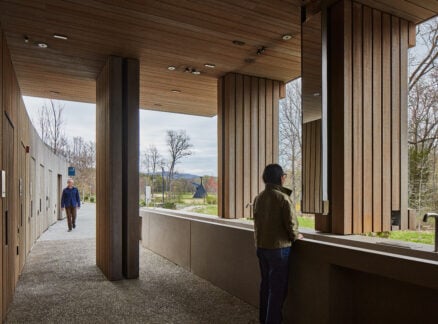November 4, 2013
Into the 21st Century: Forming New Models of Resilience & Wellness
As we move forward, research will drive design and innovation.
The twenty-first century hit us full force in 2012. That was the year of some 310 major natural disasters, most connected to climate change. For those living on the Atlantic seaboard, Hurricane Sandy (the first of the superstorms predicted for our region) reinforced the vulnerability of our coastal cities. With our transportation, buildings, and technology compromised, our valued systems of connectivity evaporated. Though we seemed to be alone, we were not. People around the globe were coping with their own droughts, heat waves, floods, avalanches, typhoons, and cyclones, from the Philippines to Europe to Pakistan.
It may be too early to assess the times we live in, but there’s a lesson to be learned from 1917, three years into World War I, when the twentieth century kicked in. Though that international crisis began with armies marching on foot and horseback, it sped up industrialization and created unprecedented innovation, including the Xray, wireless technology, and aircraft. At war’s end, modern planning, architecture, and construction introduced their own dramatic innovations. Everything in the built environment was reinvented, shifting from stone, brick, and wood to glass, steel, and chemicals.
Positive signs of our own reinvention are showing up everywhere, like the two conferences I attended in mid-October in my own backyard. Nearly a year after Sandy, TEDxNYIT explored today’s buzzword, “resilience,” from various perspectives: Mohammed Abbas, a firefighter and construction manager, gave a harrowing account of what it’s like to save lives and property amid a raging flood, burning buildings, and live wires. A young architect said “human behavior is an untapped resource,” while he attached numbers to the flood and fire: 305,000 homes were compromised in the city’s five boroughs. Margaret Newman, a city employee trained as a planner, architect, and artist, advocated a redesign of our roadways, bringing bioswales into our concrete jungle; she reminded us of the enormity of the task ahead: Our city’s lifeline, our bridges, number 788.
The Environmental Design Research Association (EDRA) symposium on health care bristled with ideas about patient centered design as opposed to the focus on health-care institutions. The shift to wellness is changing the model from large-scale hospitals with hundreds of beds to nodes of community-embedded clinics, outpatient facilities, and other, as-yet-undiscovered solutions for a health-conscious society. The Affordable Care Act, the federal rethink of our insurance system, loomed behind every idea presented at the symposium. There was talk of engaging local stakeholders; building wellness centers that bring communities together; devising better communication systems between patient, family, and staff. The twentieth-century model of health care was based on the factory mode; it’s giving way to the idea of the repair shop.
These complex challenges require systems thinking—connecting previously siloed areas of knowledge and sharing expertise while tapping into the wisdom of crowds. Research, whether by organizations or specialists embedded in design firms, is at the heart of making these changes real. Our combined brainpower fed by expertly focused and analyzed data is starting to look like the twenty-first century.





